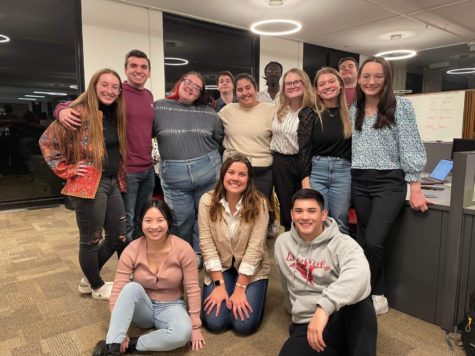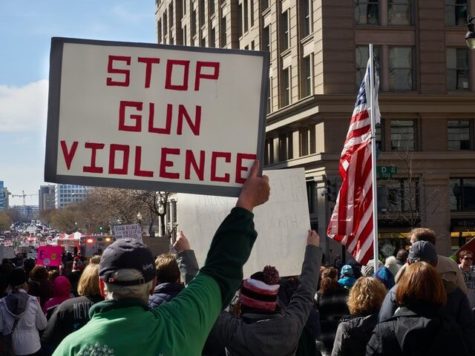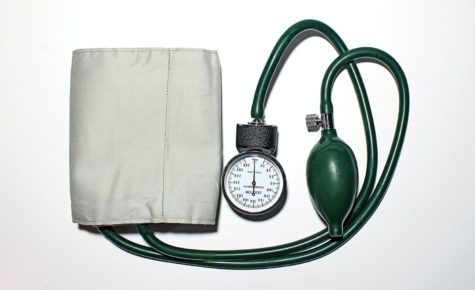Editorial: DACA and America’s “dreamers”
The ISD Editorial Board wholeheartedly encourages the DACA extension and believes “dreamers” are a part of the United States foundation.
June 24, 2020
On June 18, the Supreme Court rejected the Trump administration’s attempt to dismantle the Deferred Action for Childhood Arrivals (DACA) program protecting undocumented immigrants brought to the United States as children, which has given a reprieve to nearly 650,000 recipients known as “dreamers.”
The 5-4 decision was written by Chief Justice John G. Roberts Jr., but the chief justice made clear the decision was based on procedural issues and the Trump administration could try to redress them.
“We do not decide whether DACA or its rescission are sound policies,” Roberts wrote. “We address only whether the agency complied with the procedural requirement that it provide a reasoned explanation for its action.”
President Donald Trump announced in September 2017 that he would wind down the program, basing his decision on the argument that creating or maintaining it was beyond the legal power of any president.
Roberts wrote that the justification the government gave was insufficient or, in legal terms, “arbitrary and capricious.” He said the administration may try again to provide adequate reasons.
“The dispute before the court is not whether [Department of Homeland Security] DHS may rescind DACA,” Roberts wrote in an opinion joined by Justices Ruth Bader Ginsburg, Stephen G. Breyer, Sonia Sotomayor and Elena Kagan. “All parties agree that it may. The dispute is instead primarily about the procedure the agency followed in doing so.”
Roberts added: “We address only whether the [Department of Homeland Security] complied with the procedural requirement that it provide a reasoned explanation for its action. Here the agency failed to consider the conspicuous issues of whether to retain forbearance and what if anything to do about the hardship to DACA recipients. That dual failure raises doubts about whether the agency appreciated the scope of its discretion or exercised that discretion in a reasonable manner.”
That goes well beyond whether hundreds of thousands of people would remain protected from deportation, Roberts wrote.
“Since 2012, DACA recipients have enrolled in degree programs, embarked on careers, started businesses, purchased homes, and even married and had children, all in reliance” on the DACA program, Roberts wrote, quoting from briefs in the case.
According to the New York Times, trying again will take many months, if not years, pushing a final resolution of the case past this year’s elections.
While many see this ruling as a positive step, what is needed is a permanent legislative solution that will offer stable protection for dreamers, allowing them to continue to contribute to our society and economy by working, serving in the military and attending college.
This decision from the Supreme Court has provided all dreamers in the United States with a chance to catch their breath and continue on with their lives until DACA is either brought before the court again or is further protected.
DACA recipients, known as “dreamers,” are not the “hardened criminals” Trump has claimed, they are hard-working people looking to live their life in the United States.
In fact, the DACA program has strict requirements. To be eligible, applicants had to show they had committed no serious crimes, had arrived in the United States before they turned 16 and were no older than 30, had lived in the United States for at least the previous five years and were in school, had graduated from high school or received a GED certificate or were an honorably discharged veteran.
While the DACA program does not provide a direct path to citizenship, it provides a temporary status that shields them from deportation and allows them to work. The status lasts for two years and can be renewed.
“The consequences of the rescission, [advocates] emphasize, would ‘radiate outward’ to DACA recipients’ families, including their 200,000 U.S.-citizen children, to the schools where DACA recipients study and teach, and to the employers who have invested time and money in training them,” Roberts wrote. “In addition, excluding DACA recipients from the lawful labor force may, they tell us, result in the loss of $215 billion in economic activity and an associated $60 billion in federal tax revenue over the next ten years.”
Nearly 800,000 people over the years have taken part in the DACA program. More than 90 percent are employed and 45 percent are in school, according to one government study. Advocates recently told the Supreme Court that nearly 30,000 work in health care and their work is necessary to fighting the coronavirus pandemic.
DACA may seem like an easy way for more immigrants to enter the country or allow previously “illegal” immigrants to be protected, but the writing is clear on the wall that these individuals are just as American as anyone else and deserve the right to continue their lives in what is likely the only country they know with the most common age of a dreamer entering the United States being three years old.
On June 18, Iowa State President Wendy Wintersteen shared her support for the DACA program and for all dreamers in Iowa and at Iowa State and the Iowa State Daily Editorial Board shares the same support.
“I am writing to affirm Iowa State University’s support for members of our community supported by DACA. DACA recipients, also known as “Dreamers,” contribute to our campus and community in numerous ways,” Wintersteen wrote. “Dreamers are achievers and innovators at our university and they’re gaining the knowledge and skills to help advance the economic and cultural vitality of the state of Iowa.”

















